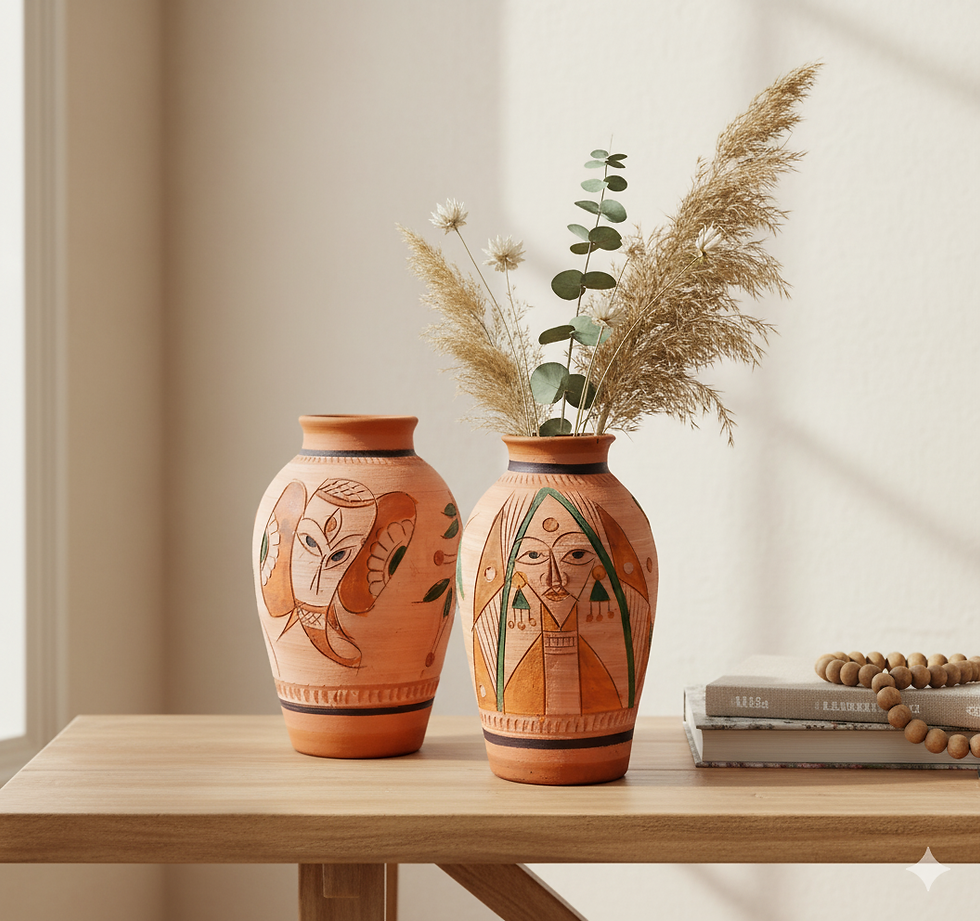A Guide to Understanding the Art of Clay Sculpture
- Jul 18
- 4 min read
Clay sculpture is a captivating art form that combines creativity, skill, and tactile experience. For many artists and hobbyists alike, working with clay is a journey of self-expression. This guide will explore various aspects of clay sculpture, from the materials used to techniques and tips for creating stunning pieces.
The Basics of Clay Sculpture
When starting with clay sculpture, it’s essential to understand the types of clay available. The three main types include earthenware, stoneware, and porcelain. Each type has unique properties that affect the final outcome of your sculpture.
Earthenware: This is the most common type of clay and is known for its workability and versatility. It is ideal for beginners since it dries quickly and is easy to manipulate.
Stoneware: Known for its durability, stoneware is less porous than earthenware. It is used for functional and decorative pieces, and it can withstand higher firing temperatures.
Porcelain: Often used for fine art and intricate designs, porcelain can be more challenging to work with due to its delicate nature. However, it allows for a fine finish and detailed features.
Understanding these types will help you choose the right clay for your project and have more control over the finished piece.

Techniques in Clay Sculpture
Once you've chosen your clay, it's time to explore various techniques for creating your sculpture. Here are some popular techniques:
1. Pinch Pot Technique
The pinch pot method is one of the simplest techniques, suitable for beginners. It involves pinching and pulling the clay to create forms. This technique allows for a lot of experimentation and personalization.
2. Coiling
Coiling involves rolling out long strips of clay and stacking them to build shapes. This method is excellent for larger pieces and helps create textured surfaces.
3. Slab Building
With slab building, you'll roll out flat pieces of clay to construct your sculpture. This technique is useful for creating geometric shapes and can give your work a clean, modern look.
4. Sculpting
Sculpting involves using tools to carve and shape the clay to form details. This technique requires practice and patience but allows for precise forms and realistic features.
Having a solid foundation in these techniques enables you to blend them and develop your unique style.

How Long Do Clay Sculptures Last?
The longevity of clay sculptures depends on several factors, including the type of clay used and the firing process. Generally, properly fired ceramic sculptures can last for decades or even centuries.
High-Fired Ceramics: These pieces, like stoneware and porcelain, are fired at higher temperatures and are more durable and less likely to chip or break.
Low-Fired Ceramics: These are more fragile and may fade with exposure to light, moisture, or temperature changes. Earthenware, for example, is generally less durable but can be treated with sealants to enhance its lifespan.
It's also essential to consider how sculptures are displayed and maintained. Keeping them in stable environments, away from direct sunlight and extreme temperatures, can significantly increase their longevity.
Tools for Clay Sculpture
Equipping yourself with the right tools can elevate your clay sculpting experience. Here are some essential tools every clay artist should have:
Clay Knife: A sharp knife is perfect for cutting and trimming clay.
Wire Cutter: This tool is excellent for slicing large pieces of clay into manageable sizes.
Rib Tool: Useful for smoothing and shaping surfaces, rib tools come in various shapes and materials.
Loop Tool: Ideal for carving and hollowing out, loop tools can help create intricate details in your sculpture.
Investing in quality tools not only improves your workflow but also enhances the finished quality of your art.

Tips for Aspiring Clay Sculptors
If you're just starting your journey in clay sculpture or looking to improve, here are some actionable tips to help you along the way:
Practice Regularly: The more you work with clay, the more comfortable you will become. Frequent practice will help you develop techniques that suit your style.
Study Other Artists: Learning from the works of established artists can inspire your creativity and motivate you to try new techniques.
Stay Patient: Sculpting takes time, and it's essential to be patient with your process. Don't rush; allow yourself to experiment and make mistakes.
Join a Community: Connecting with other clay sculptors can provide valuable feedback, support, and encouragement. Online forums, local classes, or art organizations are excellent places to start.
Explore Online Resources: There are many tutorials and online classes available that can guide you through various techniques, ensuring you continue to grow as an artist.
By incorporating these tips into your practice, you can refine your skills and create unique and compelling artwork.
Final Thoughts
Creating clay sculptures is a rewarding and fulfilling art form that encourages creativity and expression. As you explore the world of clay art, remember that each piece you create tells a story. Whether you gravitate towards functional pottery or intricate decorative art, allow your passion for clay sculpture to shine through.
To elevate your artistry, explore the world of handmade clay sculptures, where you will find countless inspirations waiting for you to discover. Embrace the journey and have fun with this beautiful craft.




Comments